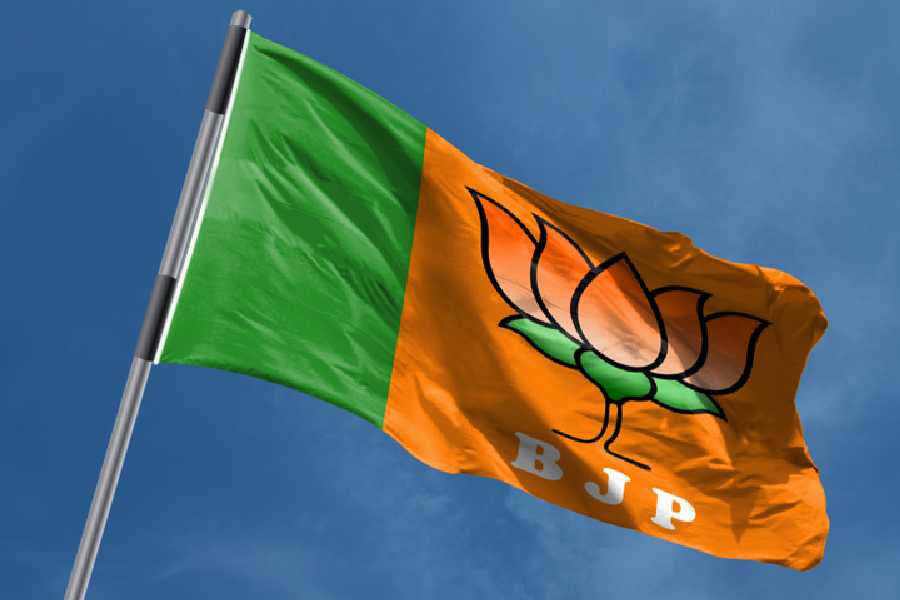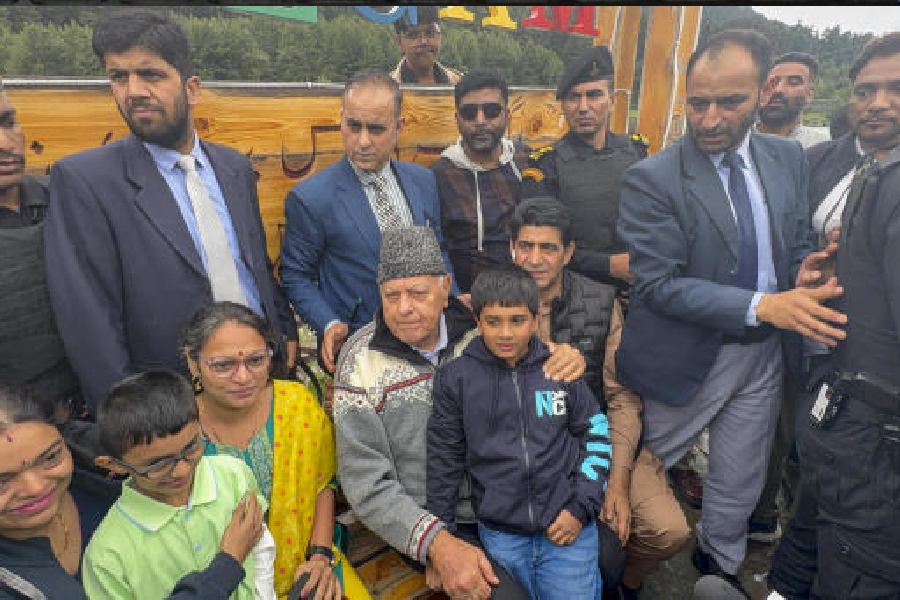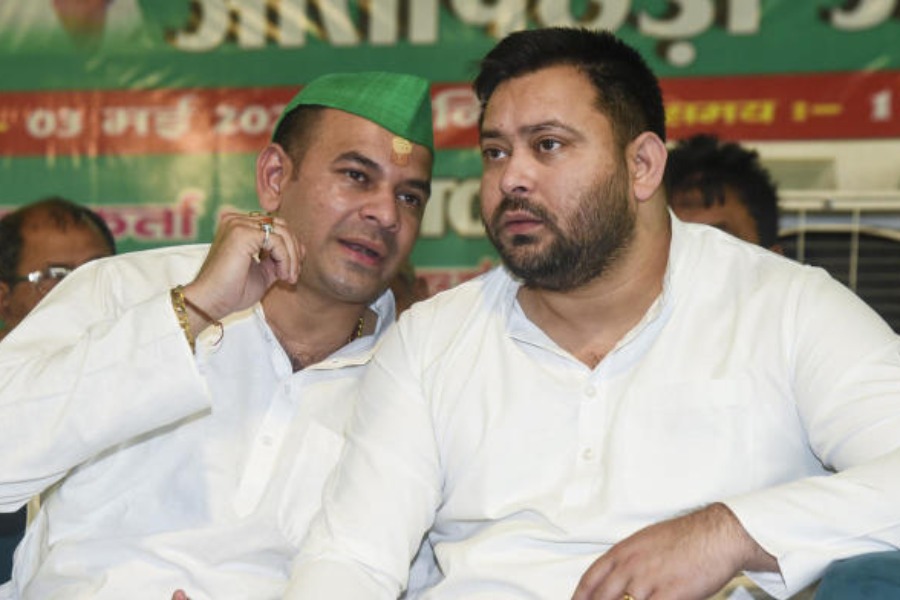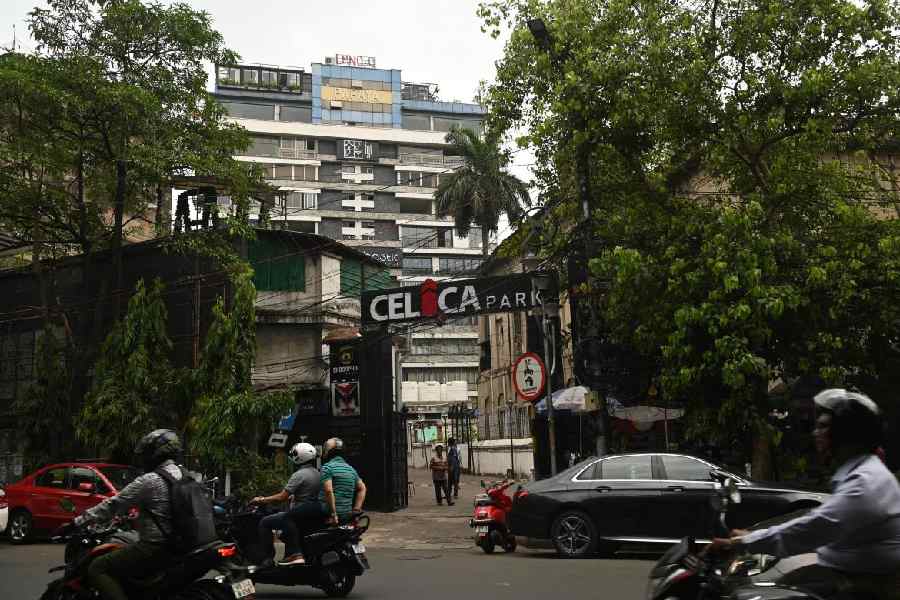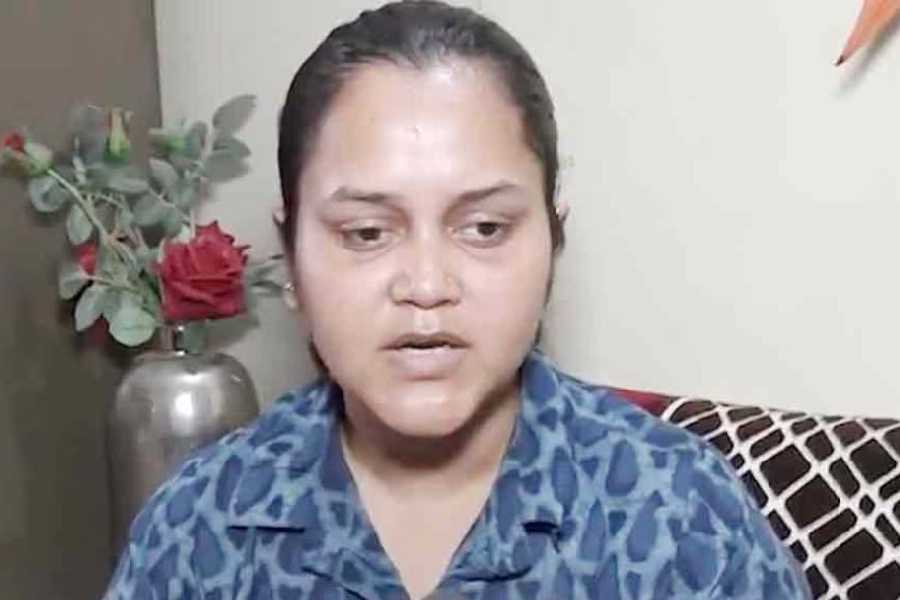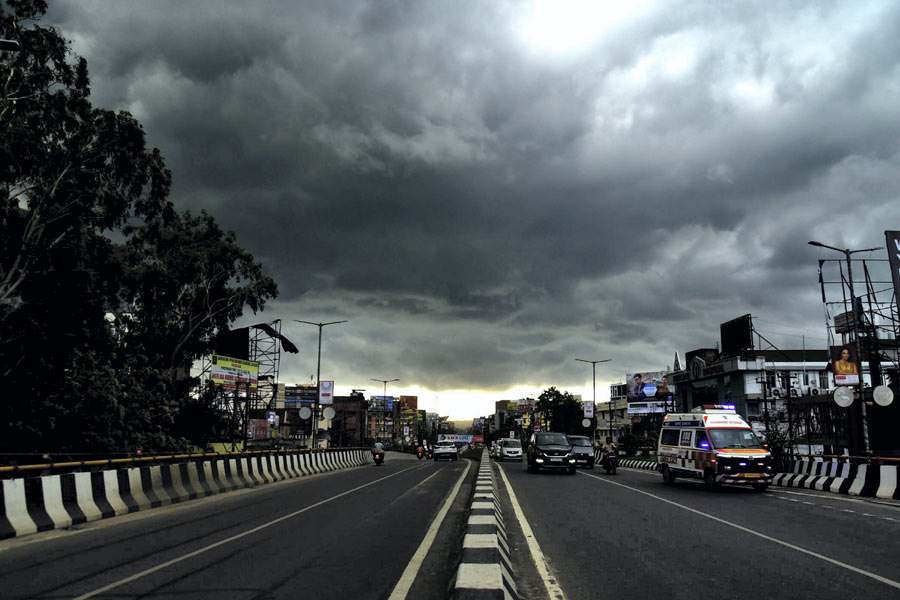 |
 |
| A still from Sandhyaraag and (below) Saikia on the sets of telefilm Abarodh. Pictures by Prasenjit Duwarah |
 |
 |
| (Above) Saikia with actor-director Abdul Majid and (below) penning one of his masterpieces. Pictures by S.H. Patgiri |
 |
 |
| Saikia at the “100 years of American Photographs” exhibition at Srimanta Sankardev Kalakshetra in September 2002 |
Obituary
Bhabendranath Saikia (1932-2003)
Death, be not proud, though some have called thee
Mighty and dreadful, for thou art not so ...
For those whom thou think'st thou dost overthrow,
Die not...
One short sleep past, we wake eternally,
And death shall be no more; Death, thou shalt die.
- John Donne
Bhabendranath Saikia, a maestro of the cinematic form and the written word, truly conquered death. In the pages of his novels and short stories and in the mosaic of his cinematic oeuvre, Saikia has left behind his soul.
And his heart was definitely in weaving tales, be they on celluloid or paper. He wove tales of ordinary people in extraordinary manner, hopping from one medium to another but never compromising on quality.
“I cannot make films which are contrary to realism. I have never made such films, nor I would make in future. My cinema depicts true aspects of human life, with possible creative inputs from me, both as a writer and filmmaker,” he once told an august gathering in Guwahati.
Authenticity was his signature theme, the hallmark of a genius credited with putting Assamese films well and truly on the national scene.
He has done this regularly since 1977. Through seven Assamese films, all of which have won the Rajat Kamal award as the best regional film — Sandhyaraag in 1978, Anirbaan in 1981, Agnisnan in 1985, Kolahal in 1988, Sarothi in 1992, Abartan in 1994 and Itihaas in 1996. Saikia also won the national award for best screenplay for Agnisnan. Besides, Saikia also made a film in Hindi, Kalsandhya (1998), dwelling on the complicated issue of militancy but where he refused to take sides.
If Saikia’s genius blossomed on celluloid, he nurtured his creativity on paper. One can call it coincidence — a wonderful one at that — that the first book that I read, very early on in life, was a novel by Saikia — Aatankar Seshot. Totally captivated, it was only after I had read the last page that I took a look at the book’s cover to see who was the author! Saikia’s stories became a constant companion since.
Each of Saikia’s stories — and I have read most — is a slice of life and profound art. It is also a reflection of the writer’s organised thought-process, a rare quality, which helped him create touching and sensitive art from trivial experiences.
The man, too, was like his art — dignified, compassionate, considerate. I can still recall the first time I met him. I had come down from Shillong especially to request Saikia to write a piece for a Rongali Bihu souvenir. Saikia, then teaching at Gauhati University, was extremely busy with examinations but he took time out to give me a beautiful piece of prose.
Who could not have been enamoured by the character and spirit of the man? From being one of my favourite authors, Saikia became an inspiration, a man whose humane qualities I have always tried to emulate.
Both the writer and filmmaker complemented each other perfectly: for all his films were based on his own stories. He admitted that he had little difficulty in fitting into the two roles —”after all, both have the same objective. Both are tales of human beings.”
I first watched Saikia’s first film Sandhyaraag at a festival in Pune. I can still recall my heart swelling with pride at the echoes of appreciation that reverberated in the hall around me. An Assamese film made under such constraints with depth and sensitivity had found its place in the sun.
Naturally, then as one who wanted to take up the craft, I wished to meet my role model again. My heart’s desire was fulfilled soon; I met Saikia again, only this time I could speak to him at length and find in his soft-spoken words the beauty of being human.
Each of Saikia’s films is a masterpiece, near-perfect in its cinematic qualities. Although Saikia did not have any formal training in filmmaking, his movies were literature on celluloid.
In fact, a few facets of his films were far superior than a trained filmmaker’s. Like a scene in Anirbaan where the protagonist, who, after having lost all his children, hits and uproots a tree he had planted in his garden in anguish. Normally not one to give in to tears, I still cry when I watch that scene. This proves the measure of the scene’s poignancy and the degree of the film’s sensitivity.
It is no wonder that like the filmmaker, Bhabendranath Saikia the litterateur was also a master of his craft. The numerous national and state awards speak for themselves. As the editor of the Assamese fortnightly magazine Prantik and the children’s magazine Sofura, Saikia was hailed by both friends and foes as a stickler for ethics.
Recognised as one of the top-ranking writers of Assam, many of his stories have been translated into English, Bengali, Hindi, Telugu, Malayalam, Marathi and Gujarati, which testify to their universality and simplicity.
Indeed, simplicity was the hallmark of this rare breed whose life began in a nondescript locality in Nagaon town. From studying physics in college to becoming a reader in the subject at Gauhati University, he followed the normal course of a commoner. But he was soon to realise that his calling lay elsewhere.
The overriding passion for creativity was to become the mantra of the maestro and the dominating theme of his life's canvas. Yes, creativity was “his” story. The poignant end was his forte, too. In the end, reel life merged with the real.


